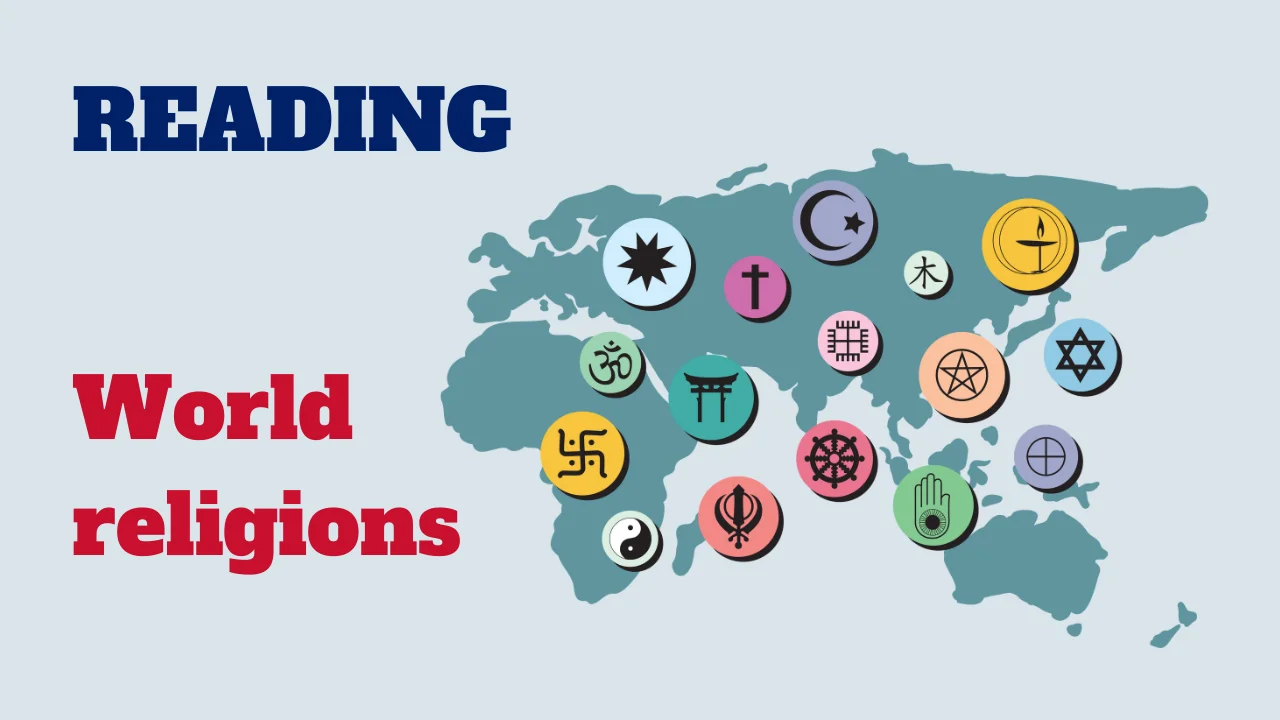Welcome to an exploration of world religions, an essential category in the study of religion that encompasses diverse and influential belief systems from around the globe. In this reading activity, we’ll delve into the origins, composition, and criticisms of the world religions paradigm, examining its impact on academic discourse and societal perceptions of religious diversity.

Text: World religions
World religions encompass a diverse array of belief systems and spiritual practices that have shaped cultures, societies, and histories throughout human civilization. Major world religions include Christianity, Islam, Hinduism, Buddhism, Judaism, and Sikhism, each with unique doctrines, rituals, and cultural significance.
Christianity, the world’s largest religion, is based on the teachings of Jesus Christ. It emphasizes faith in Jesus as the Son of God and Savior of humanity. The Bible, comprising the Old and New Testaments, is its holy scripture. Christianity has numerous denominations, including Catholicism, Protestantism, and Eastern Orthodoxy, each with distinct practices and beliefs.
Islam, the second-largest religion, is founded on the teachings of the Prophet Muhammad as conveyed in the Quran, its sacred text. Muslims adhere to the Five Pillars of Islam: faith, prayer, almsgiving, fasting during Ramadan, and pilgrimage to Mecca. Islam has two main branches, Sunni and Shia, which differ in historical and doctrinal interpretations.
Hinduism, one of the oldest religions, is a complex, pluralistic tradition with no single founder. It encompasses a wide range of beliefs and practices, including the worship of multiple deities, the concepts of karma and reincarnation, and the pursuit of moksha (liberation from the cycle of rebirth). Sacred texts include the Vedas, Upanishads, Bhagavad Gita, and epics like the Ramayana and Mahabharata.
Buddhism, founded by Siddhartha Gautama (the Buddha), focuses on the Four Noble Truths and the Eightfold Path as means to attain enlightenment and escape the cycle of suffering and rebirth. Major branches include Theravada, Mahayana, and Vajrayana, each with distinct philosophical and ritualistic traditions.
Judaism, one of the oldest monotheistic religions, centers on the covenant between God and the Israelites as described in the Torah. Jewish practices include observing the Sabbath, dietary laws, and various festivals. Key texts include the Hebrew Bible (Tanakh) and the Talmud.
Sikhism, founded by Guru Nanak in the 15th century, emphasizes the oneness of God, equality of all humans, and the importance of community service. Its scripture, the Guru Granth Sahib, is central to Sikh worship and practice.
These world religions have profoundly influenced art, culture, law, and politics, shaping human history and societal development. They continue to play vital roles in the lives of billions, providing frameworks for understanding existence, ethics, and the human experience.
Comprehension questions
Congratulations on completing the exploration of the world religions paradigm! By examining its origins, composition, and criticisms, you’ve gained valuable insight into its impact on the study of religion and societal perceptions of religious diversity. Remember to critically evaluate the categorization of religions and remain open to diverse perspectives as we continue to navigate the complex landscape of religious studies.



